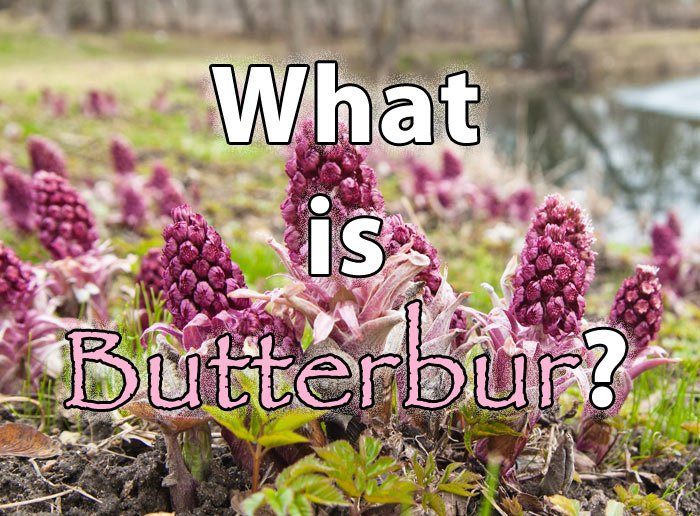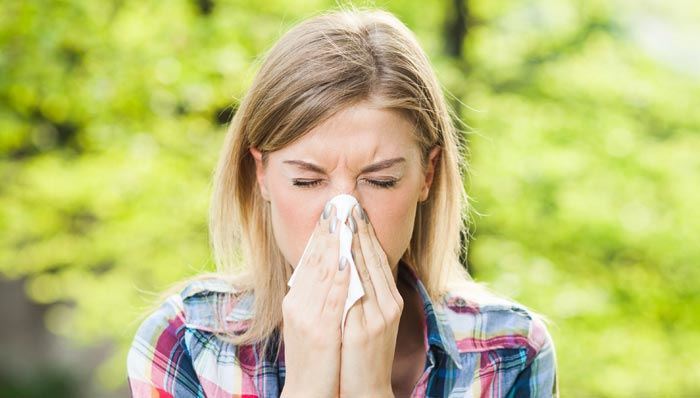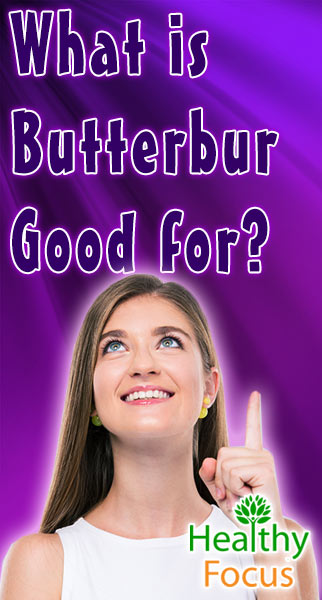Last Updated on October 20, 2016 by Marc Seward

What is Butterbur?
Butterbur (Petasites hybridus) is an herb native to certain parts of Northern Asia but now widespread in wet areas, marshlands and near to rivers in Europe and across North America. Butterbur is part of the genus Petasites and is also known by a number of other names including bog rhubarb, flapperdock and umbrella leaves.
It has traditionally been used to treat a variety of medical conditions; during the middle ages people used it as a treatment for plague and fever. It was used during the 17th century to treat respiratory complaints like asthma and coughing and also applied to skin wounds and lesions. These days butterbur is associated mainly with migraine relief and hay fever.
There have been a number of scientific studies to examine its efficacy related to migraines and hay fever and it also has potential though as yet unsubstantiated applications for respiratory conditions, bladder irritation and wounds.
Despite its benefits, a number of studies have revealed that butterbur contains harmful compounds known as pyrrolizidine alkaloids which can cause serious liver damage. If you are considering taking butterbur supplements, it is very important that you ensure the product is PA free which means the potentially dangerous pyrrolizidine alkaloids have already been removed.
The Benefits of Butterbur
For Migraines
Butterbur has a high concentration of petasin which is believed to be the compound responsible for its much of its effectiveness and according to WebMD, taking butterbur orally can prevent migraine headaches. Migraines affect millions of people around the world and most resort to taking potent pharmaceuticals that carry inherent risks of side effects and addiction.
A safer alternative is clearly desirable and research has demonstrated that butterbur root extract reduces the severity, duration and frequency of migraines in both children and adults. Indeed, research suggests that butterbur extract taken in doses of 75 mg twice a day reduces the number of migraines suffered by around a half.
Research
A study in 2005 was conducted to examine the efficacy of butterbur root extract in treating migraines in children and adolescents. 108 children, determined to have suffered migraines for at least a year, aged between 6 and 17 took part in the study. The children were treated with butterbur extract for 4 months and given a daily dose ranging from 50 to 150 mgs depending on their age.
By the end of the study, 77% of the children experienced a significant reduction in the frequency of their migraine attacks with attacks occurring around 50% less often. Over 90% of the children involved also reported a significant improvement in wellbeing by the end of the study and in addition, no adverse effects were reported. Researchers concluded that butterbur extract was an effective and well tolerated migraine treatment for children. (1)
An earlier study published in 2004 had already established that butterbur extract was effective in treating migraines in adult sufferers. 245 patients ranging in age between 18 and 65 were separated into three groups and given butterbur extract in doses of 75 or 50 mgs while the remaining group was given a placebo for a 4 month period.
Those treated with 75 mg doses of butterbur extract experienced a 48% reduction in the frequency of migraine attacks while those taking 50 mg doses reported a 38% reduction. Few adverse effects were reported other than mild gastric effects such as burping and researchers concluded that a 75 mg dose of butterbur was both an effective and well tolerated treatment for migraine attacks. (2)
Finally, it is worth mentioning here that both the American Headache Society and the American Academy of Neurology have endorsed the use of butterbur extract in migraine prevention and control.

For Hay Fever
Hay fever or allergic rhinitis is caused by ragweed and grass pollens and affects millions of people around the globe to varying degrees. Hay fever symptoms include irritated and watery eyes, sneezing and inflammation of the nasal passage. The good news for sufferers of this miserable condition is that butterbur extract made from the plant’s leaves has been demonstrated to be effective in reducing symptoms of hay fever especially nasal discomfort.
Researchers have demonstrated that butterbur extract is just as effective as commonly prescribed antihistamines and comes without any of the well-known sedative side effects of antihistamine medication. Anybody that has taken antihistamines will know how drowsy they can make you so an alternative treatment is certainly good news.
Research
Research conducted by a Swiss team published in 2002 treated 125 hay fever sufferers with either a butterbur extract or a commonly prescribed antihistamine called cetirizine. After the 2 week duration of the experiment both treatments had achieved very similar effects.
Even though cetirizine is regarded as a non-sedating medication, it caused more drowsiness in the subjects than the butterbur herbal treatment. The researchers stated that butterbur was effective and should be considered for the treatment of hay fever especially where the sedative side effects of antihistamines had to be avoided. (3)
A further study by the same team published in 2005 was conducted to compare the effects of different doses of butterbur extract. While both the low and high dose groups were significantly more effective than those given the placebo, researchers demonstrated that those treated with a high dose (1 tablet 3 times per day) experienced better results than those given a lower dose of 1 tablet twice a day. (4)

Other Possible Benefits
Butterbur might be able to benefit the mind as well as the body. One study discovered that a product containing butterbur along with valerian root, passionflower and lemon balm was able to reduce depression and anxiety in people suffering from physical pain.
While nearly all of the scientific research into butterbur has focused on migraines and hay fever, the long and varied use of butterbur suggests that it might have potential beyond those scientifically studied conditions.
Inflammation within our bodies is thought to be associated with any number of medical problems and butterbur is purported to have effective anti-inflammatory properties which can effectively reduce complains caused by inflammation. These conditions include arthritis, urinary tract infections, high blood pressure and diabetes.
Butterbur might also be effective in treating respiratory conditions such as bronchitis, asthma and coughing. There is no hard evidence available but many people suggest that butterbur can help treat skin conditions such as acne and psoriasis as well as combatting some of the common signatures of aging like wrinkles and skin blemishes.
Precautions
As I mentioned early on in the article, butterbur root, in particular the rhizomes contain potentially very dangerous chemicals called pyrrolizidine alkaloids. These compounds have a toxic effect especially to the liver and are known to cause liver disease and even liver cancer.
Reputable manufacturers remove these harmful chemicals from the butterbur extract and sell it as a PA-free product. It is very important that you seek out PA-free butterbur extract if you are thinking about taking it. The studies cited earlier in this article were all conducted with PA-free butterbur extract and none of the studies revealed any harmful side effects even on children.
PA-free butterbur extract is available in health stores, herbal practitioners or online. Petadolex is the gold standard extract used in all of the migraine studies. It is tested to have at least 15% of the active ingredient petasin and no pyrrolizidine alkaloids (which can cause liver damage or even promote liver cancer).
As with any other herbal remedy, pregnant women should consult their doctor before taking butterbur extract and the same applies to nursing mothers as not enough is known regarding its potential effect on the fetus or very young infants.
(1) http://www.ncbi.nlm.nih.gov/pubmed/15836592
(2) http://www.ncbi.nlm.nih.gov/pubmed/15623680
(3) http://www.ncbi.nlm.nih.gov/pubmed/11799030
(4) http://www.ncbi.nlm.nih.gov/pubmed/15611396

Leave a Reply
You must be logged in to post a comment.